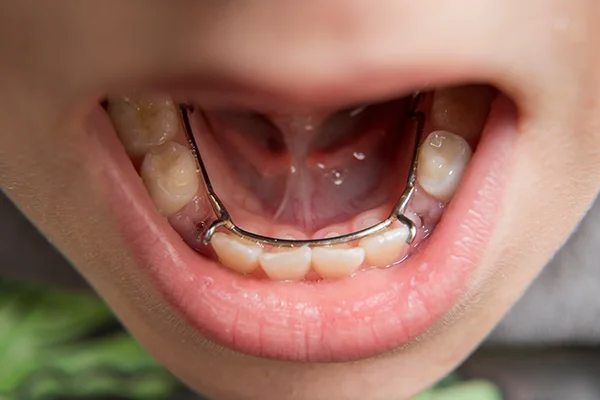Space Maintenance If you are a parent, you already know the drill. You do your best to keep your child safe from anything that might do them harm. If you could put them in a plastic bubble to protect them until they are old enough to protect themselves, you would. However, accidents and injuries happen, despite your best efforts. When children lose a tooth through an accident, tooth decay, or injury, space maintainers are used. What is a space maintainer, and how does it help your child's overall health? Jacobsen Pediatric Dentistry has some answers for you. If you are a parent, you already know the drill. You do your best to keep your child safe from anything that might do them harm. If you could put them in a plastic bubble to protect them until they are old enough to protect themselves, you would. However, accidents and injuries happen, despite your best efforts. When children lose a tooth through an accident, tooth decay, or injury, space maintainers are used. What is a space maintainer, and how does it help your child's overall health? Jacobsen Pediatric Dentistry has some answers for you.Why Would My Child Need a Space Maintainer?If your child loses a baby tooth too early because of accident or injury, baby teeth are not usually replaced. That's because dentists know that the child will get a replacement tooth soon in the form of a permanent tooth. However, the space where the adult tooth will grow in needs to be saved. In many cases, when a child loses a tooth too early, the other teeth will shift, which can prevent the tooth from erupting because there is no room for it to come in. Unless something is done, the entire jaw of teeth could shift over, and orthodontic care might be required. What Do Space Maintainers Do?A space maintainer is like a placeholder. It keeps the space open where a tooth loss occurred so that the adult tooth can erupt and close the gap. Space maintainers come in a variety of materials. They can also be removable or fixed. Types of Space MaintainersRemovable space maintainers are usually used for older children, who can follow directions as well as keep track of small objects. These space maintainers look a lot like a retainer. Plastic is used to fill in the hole where the tooth should be. These maintainers can be removed for eating, drinking, or brushing teeth, so they are convenient. There are several different types of fixed space maintainers. All of the fixed space maintainers are cemented to the teeth. A band and loop maintainer is usually made of wire that is stainless steel. The wire is fixed to a crown or a metal band on the tooth next to the empty socket where the lost tooth was. If your child lost a lower tooth, or two back teeth, a lingual arch might be used. A wire is used to attach a space maintainer on both sides of the lower jaw to prevent the front teeth from shifting backward. When a molar is lost, sometimes a distal shoe is used. This is a thin wire inserted under the gum to keep the space open for the adult molar to erupt. All of these space maintainers require regular dental visits, to make sure that the maintainer is doing its job, and your child is in good dental health. If you have questions about space maintainers, or about dental health in general, why not give Jacobsen Pediatric Dentistry a call at (971) 459-2431? We love to answer questions. |
 |